- All resources
- Sell everywhere
- Topic overview
Intro to omnichannel commerce
Tools and strategies for reaching customers where they are
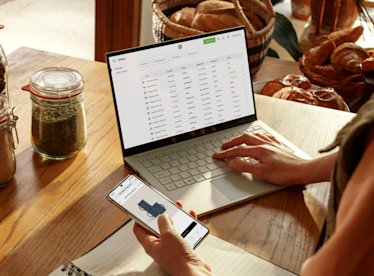
Omnichannel commerce is changing the way businesses of all sizes market and sell their products and services. But what is omnichannel? Is it meaningless jargon or a strategy that makes sense for your business? This guide will break down omnichannel commerce and show you how to incorporate it into your business, whether you’re a sole proprietor or about to open your tenth location.
What is omnichannel?
Omnichannel is the ability to create a consistent experience for your customers regardless of where, when or how often they interact with your business. It’s a business strategy that enables you to engage your customers and prospects wherever they are – and make the sale.
Traditionally, large retailers have been first to adopt an omnichannel approach. However, customer behaviour is constantly evolving and these retail trends have started to affect the way consumers interact with businesses of all sizes in nearly every industry.
Omnichannel tools for your business
The first step to unify your business with an omnichannel strategy is to understand your customer journey across every touchpoint in the buying process. Once you have a clear journey map in place, you’ll know what tools you need to help you succeed.
Let’s break down the stages of the customer journey and how you can connect each one to create a seamless experience for your customers.
Helping customers discover your products and services

Customers expect to interact with businesses from anywhere at any time, which is why most omnichannel strategies start with adding the online channel. Retailers of all sizes use their website to sell and ship physical products all over the world, restaurants publish their menus and accept online orders, and service businesses book appointments 24/7 with online scheduling software.

Square Online for Retail
Square Online for Restaurants
Square Online for Services

Many businesses rely on email marketing to promote their products and services, but consumers are becoming more comfortable with new marketing channels and one-to-one communication as a way of interacting with businesses. Omnichannel takes your marketing to the next level by making it easy for customers to buy products and services directly from an email or Instagram post and can improve customer service by keeping your communication channels organised.
Making the sale and collecting payment
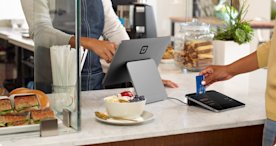
This is where your marketing strategy becomes an omnichannel business strategy. It’s one thing to promote your products and services where your prospects are, but it’s another to actually convert them into paying customers whenever they are ready to buy.
Doing this successfully requires a central hub where all of your product and sales data come together. For businesses that run on Square, their point of sale allows them to bridge in-person and online experiences in one seamless flow.

Social media has been a primary channel to promote products and services for some time, but many businesses have started to use their social profiles to close the sale. This can be in place of having a full eCommerce site or in addition to it. Turning your social media profiles into a sales channel is easy when your business systems are designed to support an omnichannel approach.

For service businesses, such as consultants, photographers and accountants, the sales process involves going back and forth with potential clients to agree on the details of a job or project. You can offer clients an omnichannel experience by digitising parts of your service operations, such as contracts, estimates, billing and invoicing. Doing so saves you from spending too much time on administrative tasks and offers your clients a seamless experience.
Fulfilling orders that come from anywhere

When you run an omnichannel business, sales can happen anywhere and any time. Making sure you have the right technology to handle this complexity is critical. Businesses that run on Square can view and manage all of their orders from their point of sale or Square Dashboard, regardless of whether those orders came from their website, over the phone, a digital marketplace or in-person.

Square for Retail Inventory Management
Square KDS
Square for Restaurants Online Order Management
Why you need an omnichannel strategy
Browsing products in one channel and purchasing in another is becoming increasingly common as consumers conduct research and compare products. And research has shown that omnichannel shoppers spend more per transaction and show more brand loyalty than customers who use a single channel.
Consumers expect fast, convenient options, whether they’re buying a new pair of shoes or placing a takeaway order on Friday night. With attention spans shorter than ever, it’s never been more important to reach your customers on the channels they use most often.
Omnichannel vs multichannel
There are many ways to think about how you create a great customer experience. Omnichannel and multichannel are two separate and often misunderstood ways to approach it.
Multichannel commerce is the ability for a business to interact with its customers on multiple channels (such as email, social media, a website, etc.), but without a consistent approach to messaging or inventory management. It helps you reach more customers in more channels, but it stops short of connecting those channels in a seamless way for you and your customers.
Omnichannel commerce is an integrated approach that puts the customer at the centre, with all your marketing and sales channels working together to help you reach, understand and serve them better.
Understanding the omnichannel experience
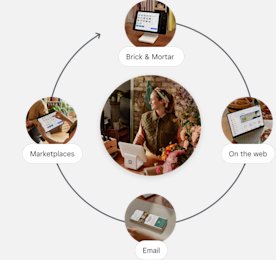
There are seemingly endless channels a customer might use to discover and purchase products and services, but simplifying the customer experience into a few basic areas can make it easier to manage.
- Brick and mortar
- Websites and social media
- Messaging
- Digital marketplaces
Depending on the customers your business serves, you may rely on some channels more than others, but it’s important to be aware how each of them help you reach more customers and grow your business. Let’s look at each channel in more detail.

1. Brick and mortar
Despite the rise in online channels, in-person experiences will remain an important part of the overall customer experience for many businesses. The key is to find ways to bring digital and physical experiences together.
The brick-and-mortar channel can include a permanent shopfront, restaurant or office space; temporary physical locations, such as pop-ups or markets; and even mobile locations, such as food trucks and on-the-go service providers.
Businesses that rethink how they use their physical space will find opportunities to differentiate themselves from the competition. For example, some retailers have turned their shopfronts into showrooms with little to no inventory, effectively creating a browse in-store, buy online experience. Many restaurants have created dedicated stations for takeaway orders and delivery pickup, in addition to sit-down service, to cater to a variety of customer needs.
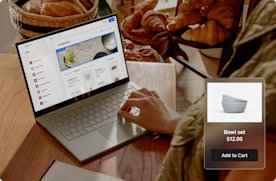
2. Websites and social media
Your company’s website is often seen as the primary channel in an omnichannel experience – and for good reason. Most consumers turn to the web first when looking for new products and services. For a business that started with in-person sales, establishing a website is often one of the first steps to building an omnichannel strategy.
Other digital channels that fall into this category include custom apps and social media sites. Social media has long been a channel for promoting your business, but more recently, it is becoming a channel to make sales and accept payments.
Businesses that have historically focused on in-person experiences are having to make sure their digital footprint is an accurate reflection of their physical service. For example, when researching professional services, like accountants, lawyers or consultants, clients will often look for reviews and other forms of social proof before contacting the business. And once contact is made, much of the back-and-forth communication is done electronically.

3. Messaging
Direct, personalised communication is one of the fastest growing aspects of omnichannel experiences. Traditionally, messaging channels have consisted of phone calls and email. Today, customers turn to text messaging, social messengers, such as Facebook Messages and WhatsApp, and smart speakers, such as Alexa and Google Home to learn about a business and get more information.
Some of these capabilities may seem applicable only to large enterprises, but consumers are learning to expect the same level of convenience from small businesses as well. You can expect this channel to see a lot of innovation in the coming years as trends like conversational commerce become more established.
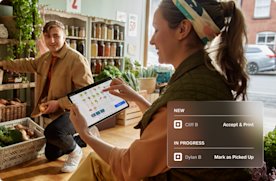
4. Digital marketplaces
Depending on the products and services your business offers, there are many types of digital marketplaces that might make sense to explore. Third-party eCommerce sites, food delivery services and sites that connect customers with service providers all fall into this category. Digital marketplaces offer one-stop shopping plus reviews and recommendations, which is a powerful combination for developing trust among consumers. The integration of your business with these marketplaces can be an important part of supporting omnichannel sales and can give you access to an entirely new audience.
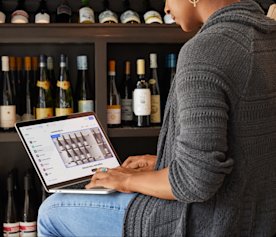
Check out more guides to help you optimise all sides of your business.
